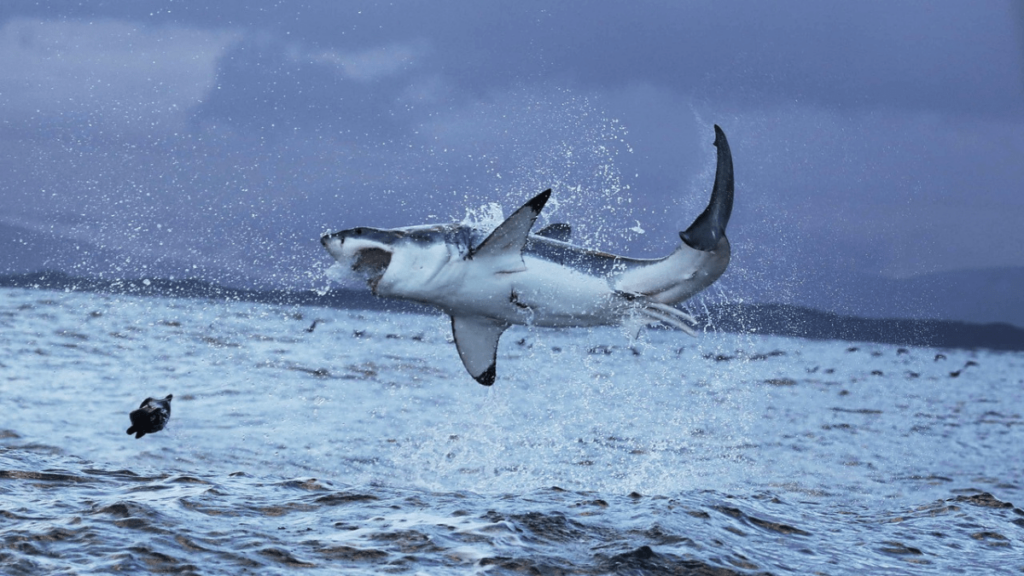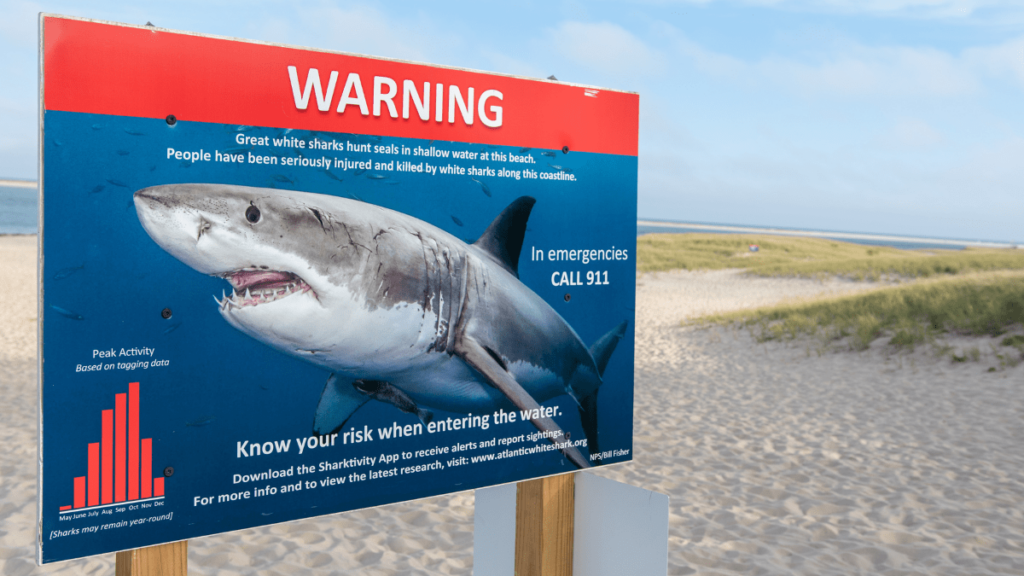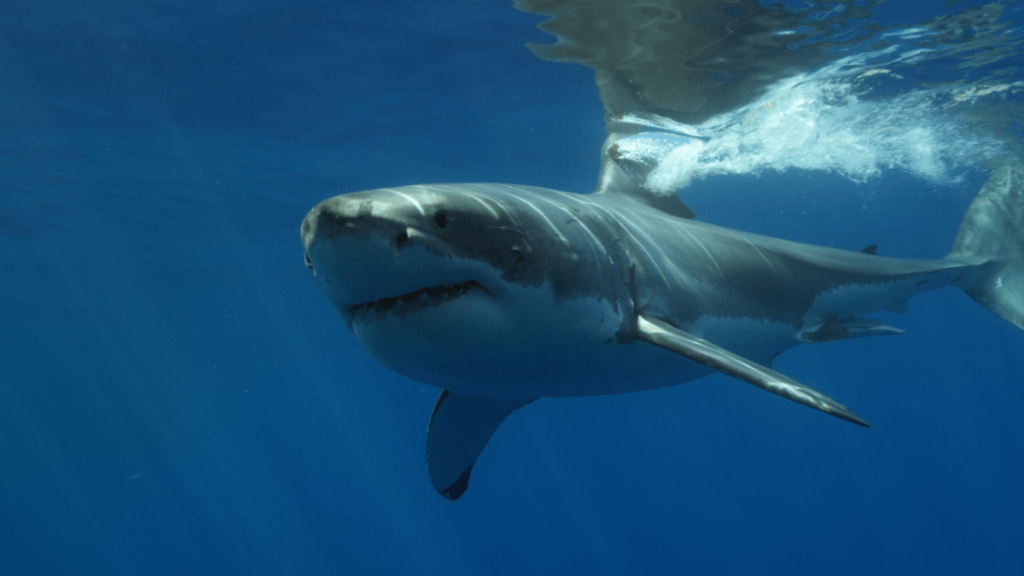The great white shark is a shark that has a surprisingly diverse range.
Most people probably think of places like Mexico, Australia, and South Africa when thinking of potential places for great white shark encounters.
But the truth is that their range is much broader than that, and you’ll likely be shocked by some of the places where you could run into one of these notorious animals.
Let’s take a more in-depth look at the various places across the world’s oceans where you might find a great white shark.
What Is The Range Of Great White Sharks?
Great whites have, as mentioned, a massive range. They can be found in coastal waters worldwide that have a temperature between 12-24 degrees Celsius (54-75 degrees Fahrenheit).
In the Atlantic, they are found as far north as Portugal (on the European side) and Maine (on the US side) and are found in numbers off the coasts of both South America and southern Africa.

In the Pacific, their range is similarly broad; they are found all the way up to the Bering Strait and are everywhere in the southern Pacific except in the waters near Antarctica.
It’s an epipelagic fish, meaning that it is typically found in the 200 meters of water closest to the surface.
It can dive deeper than that but typically does not. It’s found in high numbers in areas where its prey is particularly abundant; this means that waters are rich in seals, sea lions, other sharks, bony fish, and whales.
This means that, though the great white shark has a huge range, it’s more plentiful in some parts of that range than others.
Let’s take a look at places in the world where great white sharks are found in particularly large numbers.
New England and New Jersey, USA
Great white sharks have traditionally been found in large numbers off the coast of New England, particularly off the coasts of Maine and Massachusetts.
At one point, the shark was almost completely wiped out in those waters due to overfishing; however, in recent years, it has bounced back in great numbers due to US marine conservation laws and the presence of large numbers of seals in those waters.
A little further south, the great white was implicated in the notorious Jersey Shore attacks of 1916, in which five bathers were attacked (and four killed) by an unidentified shark or sharks.
Due to the severity of the attacks (many of the victims had their legs severely mauled or outright severed), some experts attributed the attacks to a great white shark.
Some of the attacks took place in a creek around 10 miles inland, however, causing others to believe that a bull shark – which is known for swimming up estuaries – was the actual culprit.
Guadalupe, Mexico

Great white sharks are common throughout the waters of Mexico on both coasts, but nowhere are they found in greater numbers than the island of Guadalupe, about 250km (160 miles) from the Mexican mainland.
The island is a designated biosphere reserve, and in addition to the natural beauty to be found on the island itself, is a fantastic place for seeing great white sharks.
Marine biologists commonly dive there to study the sharks, and the famed female great white Deep Blue is often seen in the waters there.
The White Shark Café, Pacific Ocean
This unusual meeting point for great white sharks is found far from any coast, about halfway between Baja California and Hawaii.
Researchers were originally baffled by the fact that the otherwise coastal great white would swim thousands of miles to this point and loiter there for periods as long as several months.
The swim takes the typical great white around 100 days to make, and they make frequent deep dives of up to 190 meters. While at the Café, they will dive up to 500 meters every ten minutes.
Sharks of all ages can be seen making the unusual pilgrimage, and the reason for it is still not fully understood.
A 2006 study revealed that the sharks were diving to below the point that sunlight penetrated and were eating light-sensitive creatures, but male and female sharks dive differently, and the reasons are still unknown.
Dyer Island, South Africa
Perhaps the most famous place in the world to observe great white sharks is Dyer Island, South Africa. The shark can be found in huge numbers off the coast of South Africa’s Western Cape, with huge numbers of tourists visiting for cage dives with the fearsome fish.
The reason for the large number of sharks in the area is thought to be the huge colonies of seals and also the whales that are frequently spotted in the area (the Western Cape is also a hugely popular spot for whale-watching).
Honorable Mentions on the Great White Shark Habitat Map

There are many other spots throughout the world that are noted for their great white sightings and earning a spot on the great white shark habitat map, though they may not be found in particularly large numbers.
Australia
Great whites exist in large numbers all along Australia’s eastern coast, as well as in isolated pockets elsewhere. Curiously, they are rarely found along the northern coast, despite the fact that it falls into their global range.
The Red Sea
The Red Sea may be more noted for its aggressive tiger and bull sharks than its great whites (who seldom attack people there), but the world’s most notorious shark is nevertheless still there.
The Mediterranean Sea
Great white sharks are spotted so infrequently in the Mediterranean that many people don’t believe they exist there.
Yet they do, as this 1998 video by an Italian fisherman demonstrates. The Mediterranean population of great whites is seldom seen, but they are believed to be particularly large specimens.
The North Atlantic
In remote spots of the North Atlantic, great whites have been observed diving into anticyclonic eddies – columns of warm water forced deeper than usual.
It’s been speculated they do this so that they can feed at greater depths than usual.
Conclusion
We’d be surprised if you’ve read this article and not found at least one place you didn’t know about where the world’s most famous shark can be found.
From the head-scratching White Shark Café to the serene waters of the Mediterranean, the fact is that great white sharks are pretty much everywhere.
They could, in fact, be swimming in the waters off the nearest coast to you right now…
